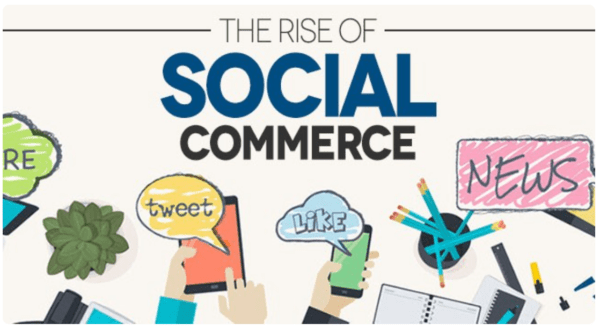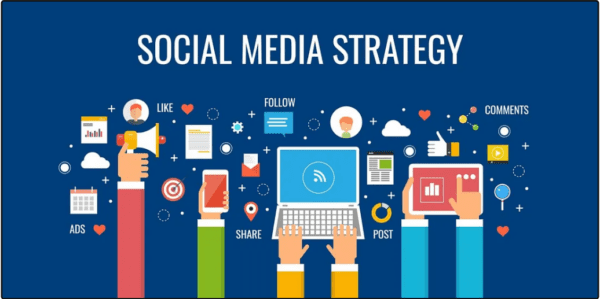If you’re running an e-commerce business in 2024, you can’t afford to ignore social media. Social media has become an indispensable tool for e-commerce businesses to reach their target audience and drive sales. With billions of users worldwide, social media platforms like Facebook, Instagram, TikTok, and Pinterest provide an excellent opportunity for businesses to showcase their products and services to a large and engaged audience.
Social media platforms offer a range of features that e-commerce businesses can use to promote their products, including shoppable posts, product tags, and in-app checkout. These features allow companies to create a seamless shopping experience for their customers, making it easier for them to discover, browse, and purchase products without leaving the platform. By leveraging social media, e-commerce businesses can build brand awareness, engage with customers, and drive traffic to their online stores.
In addition to offering a powerful marketing channel, social media can also help e-commerce businesses to increase their online sales. According to a recent study, social media drives 34% of e-commerce sales, making it the second-largest source of online sales after search engines. Using social media to promote their products, e-commerce businesses can connect with their target audience, build trust and credibility, and drive more sales.

The Rise of Social Media E-Commerce
Social media has revolutionized how we communicate, interact, and share information. Over the years, social media platforms have evolved into powerful marketing tools for businesses to reach and engage with their target audiences. With the rise of social media e-commerce, companies can now sell their products directly to consumers through social media platforms.
Understanding Social Commerce
Social commerce refers to integrating social media and e-commerce, where users can discover, share, and purchase products directly within social media platforms. Social commerce has become increasingly popular in recent years, with the number of social media users steadily increasing. According to Forbes, social media is widespread across the globe, touching nearly every aspect of our lives, and one crucial aspect of social media is its ability to drive e-commerce sales.
The Impact on E-Commerce Sales
The rise of social media e-commerce has significantly impacted e-commerce sales. According to Insider Intelligence, US retail social commerce sales will pass the $100 billion milestone in 2025, representing a 22.4% growth from the year prior. Furthermore 2024, there will be 110.4 million US social buyers, accounting for 42.0% of all internet users and nearly half (50.3%) of social media users.
Key Platforms Driving Social E-Commerce
Several social media platforms have emerged as critical players in the social e-commerce landscape. Instagram, Facebook, Pinterest, and TikTok are among the most popular platforms for social e-commerce. These platforms allow businesses to create shoppable posts, where users can click on a product and purchase it directly within the platform. This seamless integration between social media and e-commerce has made it easier for businesses to reach and engage with their target audiences and drive sales.
In conclusion, social media e-commerce is a rapidly growing trend transforming how businesses sell their products online. With the increasing number of social media users and the seamless integration between social media and e-commerce, companies can expand their reach and drive sales through social media platforms.

Developing a Social Media Strategy for E-Commerce
As an e-commerce business, social media can be essential to drive sales and increase brand awareness. Here are some key elements to consider when developing your social media strategy:
Content Creation and Curation
Your content strategy should be centred around providing value to your audience. This can be achieved by creating high-quality, informative, visually appealing content showcasing your products and services.
To keep your content fresh and engaging, consider curating user-generated content (UGC). This can include customer reviews, photos, and videos that showcase your products in real-life situations. Not only does UGC provide social proof, but it also encourages engagement and interaction with your brand.
Leveraging User-Generated Content
UGC can be an effective way to showcase your products in a real-life context. Encourage your followers to share their experiences with your products by creating a branded hashtag and running a UGC campaign.
You can also leverage UGC by reposting it on your social media channels. This provides social proof and encourages engagement and interaction with your brand.
Engagement and Interaction Techniques
Engaging and interacting with your audience on social media is essential for building a loyal following. Responding to comments and messages promptly and providing exceptional customer service can achieve this.
Another effective engagement technique is to run social media contests and giveaways. This not only encourages engagement and interaction but also helps to increase brand awareness and drive sales.
In conclusion, developing a social media strategy for e-commerce requires a well-defined content strategy, leveraging user-generated content, and engaging and interfacing techniques. By following these guidelines, you can effectively use social media to drive sales and increase brand awareness.

Maximizing Sales Through Social Media Marketing
Social media marketing can be an effective way to boost e-commerce sales and drive revenue growth. You can reach your target audience and increase your conversion rate by utilizing advertising and targeted campaigns, influencer and affiliate partnerships, and conversion optimization techniques.
Advertising and Targeted Campaigns
One way to maximize sales through social media marketing is to utilize targeted ads. You can precisely reach your ideal customer using social media platform targeting tools. For example, Facebook allows you to target users based on interests, behaviours, and demographics. This means you can create ads tailored to specific groups of people, increasing the likelihood that they will convert.
Influencer and Affiliate Partnerships
Another way to maximize sales is through influencer and affiliate partnerships. Influencers have a loyal following on social media and can help promote your products to their audience. By partnering with influencers, you can tap into their audience and increase your brand awareness. Similarly, affiliate partnerships can help you improve your sales by incentivizing partners to promote your products and earn a commission on sales.
Conversion Optimization Techniques
Finally, conversion optimization techniques can help you maximize your sales through social media marketing. By using A/B testing, you can test different variations of your ads to see which perform best. Additionally, optimizing your website for conversions can help increase your sales. This can include improving your website’s loading speed, simplifying your checkout process, and using persuasive copy and design.
In conclusion, social media marketing can be a powerful tool for maximizing e-commerce sales. You can reach your target audience and increase your conversion rate by utilizing advertising and targeted campaigns, influencer and affiliate partnerships, and conversion optimization techniques.

Enhancing Customer Experience on Social Platforms
In today’s world, social media has become an essential part of our daily lives. It has also become a crucial platform for businesses to connect with customers. Social media platforms provide an excellent opportunity for companies to enhance their customer experience. By prioritizing your customer’s experience through responsive communication and support, you can maximize your e-commerce sales. Here are a few ways to enhance customer experience on social platforms:
Building Brand Awareness and Loyalty
Social media is an excellent platform for building brand awareness and loyalty. Promoting your brand on social media enables you to reach a wider audience and engage with your customers. You can use social media to showcase your products, services, events, and promotions. Creating engaging content can build a loyal following and increase your engagement rate.
Customer Service and Support via Social Media
Social media platforms provide an excellent opportunity for businesses to provide customer service and support. By incorporating chatbots into your social media platforms, you can significantly streamline the shopping experience. Chatbots can help customers with frequently asked questions, provide recommendations, and guide them through sales. You can increase customer satisfaction and loyalty by providing excellent customer service and support.
Utilizing Social Proof and Reviews
Social proof and reviews are essential for building customer trust and credibility. You can increase customer confidence in your brand by showcasing social proof, such as customer reviews, ratings, and testimonials. You can also use social media to encourage customers to leave reviews and share their experiences with your brand, thus increasing customer engagement and sales.

In conclusion, enhancing customer experience on social platforms is essential for maximizing e-commerce sales. By building awareness and loyalty, providing excellent customer service and support, and utilizing social proof and reviews, you can create a positive customer experience and increase customer engagement.
Measuring Success and Analytics
When it comes to e-commerce sales, measuring success and analytics is crucial to understanding how your business is performing and where you can improve. Here are some key performance indicators (KPIs) to track and analyze:
Key Performance Indicators
- Reanalyze the number of people who have seen your social media posts or ads.
- Traffic: The number of visitors to your website.
- Conversions: The number of visitors who purchase or take a desired action on your website.
- Conversion rates: The percentage of visitors who convert to customers.
- Revenue: The total amount of sales generated by your e-commerce store.
- Engagement rate: The percentage of your followers who engage with your social media posts.
By tracking these KPIs, you can gain valuable insights into how your e-commerce business is performing and where you can improve. Analyzing traffic and conversion data: Understanding which marketing channels drive the most traffic and conversions is essential.
Analyzing Traffic and Conversion Data
Analyzing tools like Google Analytics allows you to track the source of your website traffic and which pages are driving the most conversions. This data lets you identify the most effective channels and adjust your strategies accordingly. For example, if social media drives a lot of traffic but not many conversions, you may need to change your messaging or targeting to better appeal to your audience.

Adjusting Strategies Based on Insights
Once you have analyzed your data and identified the area that needs improvement, you can adjust your strategies to meet your goals better. This may involve experimenting with different marketing channels, targeting different audiences, or changing your messaging or pricing. Conducting surveys or gathering feedback from your customers can also provide valuable insights into what they like and don’t like about your e-commerce store.
In conclusion, measuring success and analytics is essential for any e-commerce business looking to grow and succeed. By tracking and analyzing KPIs, analyzing traffic and data, and analyzing your strategies based on insights, you can optimize your e-commerce store for maximum success.


